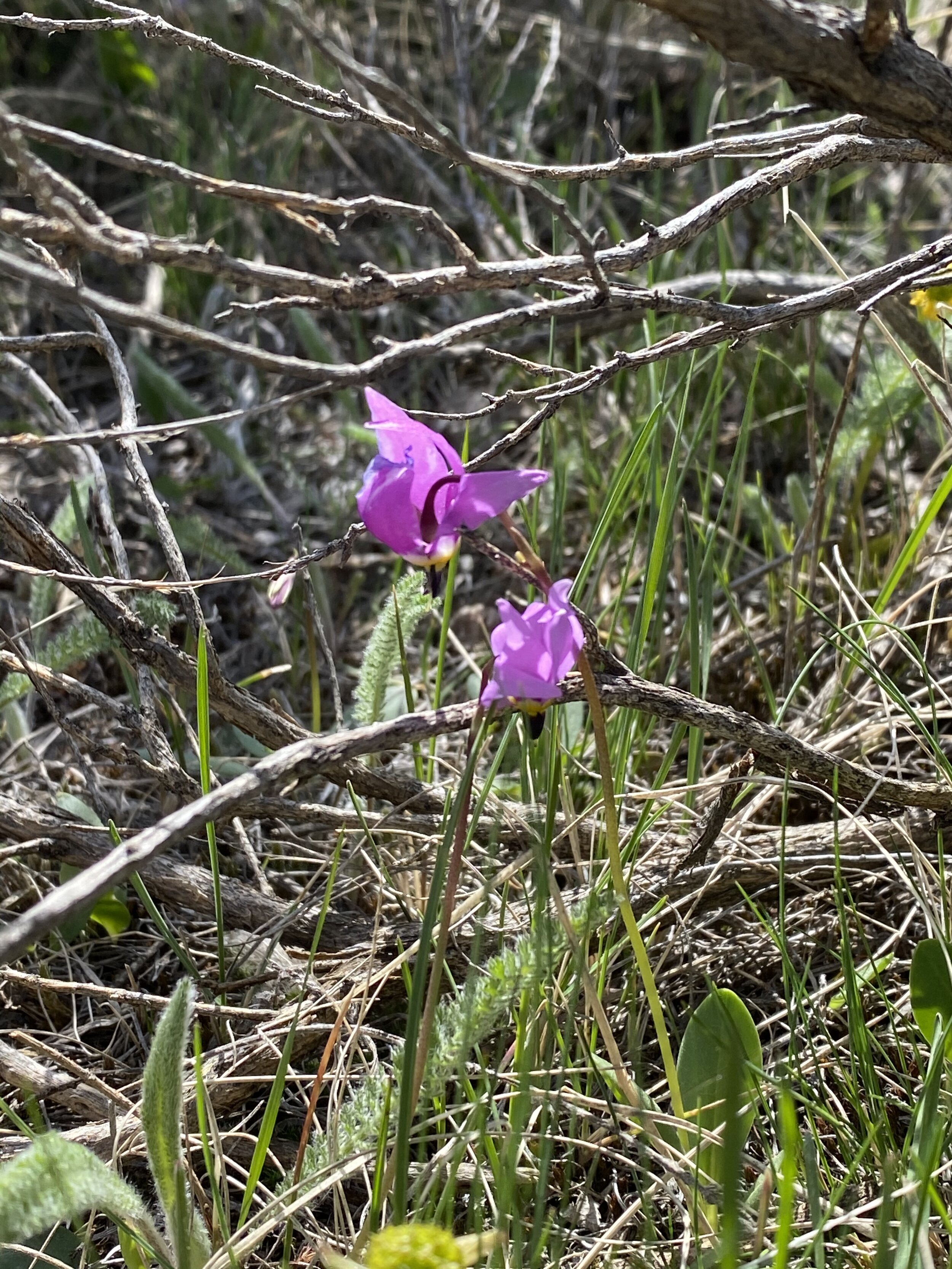This week Jackie and I had the pleasure of meeting with Montana Trout Unlimited finest. Executive Director David Brooks, Development Director Kelley Willet and Watershed Project Manager Chris Edgington came to visit and fill us in on the latest programs and projects Mt TU is working on.
Meeting with Brooks, Willet, and Edgington near the Madison River.
This organization never, ever accepts a dime of “dark money”, instead relying on donations from folks like all of us to get their mission accomplished. Please, if you are not a member, join them today. In these challenging times we face today, donations to grassroots organizations that protect and preserve our wild and native trout and fly-fishing heritage are drying up. The worst thing we can do is to do nothing, the best thing we can do is act and support organizations that enhance and protect what we all know and love. Step up today and give what you can, please, and thank you! It turns out Montana TU is involved in restoration programs in the Jefferson River Valley along with their continued work on Rattlesnake Creek near Missoula and an important instream flow project here in the Madison Valley. Check their website for more, and stay tuned here for current information as it unfolds.
This week I made good on my promise to donate a rare 1938 first edition copy of Howard Back’s iconic “The of Yellowstone Waters with Rod and Fly” to the West Yellowstone Public Library. Jackie and I drove into West Yellowstone and presented it to Head Librarian Steve Takata last Wednesday. This rare book will sit in the “Fly-Fishing/Angling Section” of the library along with the dozens of books we were able to work with the library to acquire from the Herbert Wellington collection of angling books. Herb was an old friend and we know he’s smiling knowing his books are a large part of this incredible collection of books.
Presenting the book to West Yellowstone Public Library.
Mid-July is “Caddis Time” in Yellowstone country, and there’s no better place to find big trout rising to caddis than $3 Bridge on the Madison River. Most evenings as the sun sets behind the Gravely Mountain Range in the Madison Valley we see awesome sunsets and fish strong emergences of caddisflies.
Sunset at $3 Bridge.
I’ve been very busy at my fly-tying vise cranking out Amber Iris and X Caddis for the shop. Guess how many caddis are in this pile of Iris Caddisflies I recently delivered!
Last week Yvon Chouinard and I fished caddis activity in the evenings and mornings. Here’s a shot of Yvon trying to land a large brown trout without a landing net. The fish came to a #16 Tan X Caddis fished on Yvon’s favorite cane rod, a Leon Hansen 8’ 4 weight bamboo. Yvon did land the hefty brown along with several more.
Yvon with a nice brown trout.
Speaking of $3 Bridge, check out the new sign placed there by Western Rivers Conservancy, the organization that puts money directly into purchasing rivers and streams, keeping them open for public access, forever.
I was pleased to work with Western Rivers Conservancy, previously known as River Network, on the $3 Bridge Project several years ago. We were able to fund the purchase of 3 miles of river front property and turn it over to Montana Fish, Wildlife and Parks to manage. At that time there were folks competing with us to buy the land and develop it that would have closed it off to the public forever. We used this purchase and resulting land deal as the spring board to put together another project directly upstream, the Olliffe Ranch Conservation Easement Program, to bring another mile of the Madison River into public hands with an easement that allows permanent public access to the next upstream one mile of river front, all the way to Raynolds Pass Bridge. I worked with my old friend Alex Diekmann, and Trust for Public Land, to put this project together using Land Water Conservation Fund monies. These 2 programs have served as a model on how to put together private and public partnerships and funding to accomplish projects that provide public access and protect wildlife migration corridors, wild-native trout habitat and open spaces for all future generations to enjoy, forever!
Summer is the time to enjoy public lands and wild trout on rivers like the Madison. And, it allows fly tiers like me to develop new fly patterns to present to selective trout on rivers like the Madison. This week I came up with a Spent Longhorn Caddis fly, size #16, to fool big fish selectively feeding on spent Oecetis sp. (Longhorn) Caddis. The adult females, after laying their eggs, lay spent on the surface of the water and large brown and rainbow trout relish them. You can see a photo below. The natural has a lovely bright green body. The Longhorn Caddis have long been a part of caddis fishing on the river but over the past 3 years this species of caddis have become one of the most important to imitate and fish for reasons unknown to us.
Spent Longhorn Caddis
Thanks for reading my blog and please, if you can, support grassroot organizations like Montana Trout Unlimited and Western Rivers Conservancy. These 2 fine organizations are barebones effective and efficient, and give fly fishers so much to be grateful for. I thank you in advance and stay tuned for the next report and blog post!






















